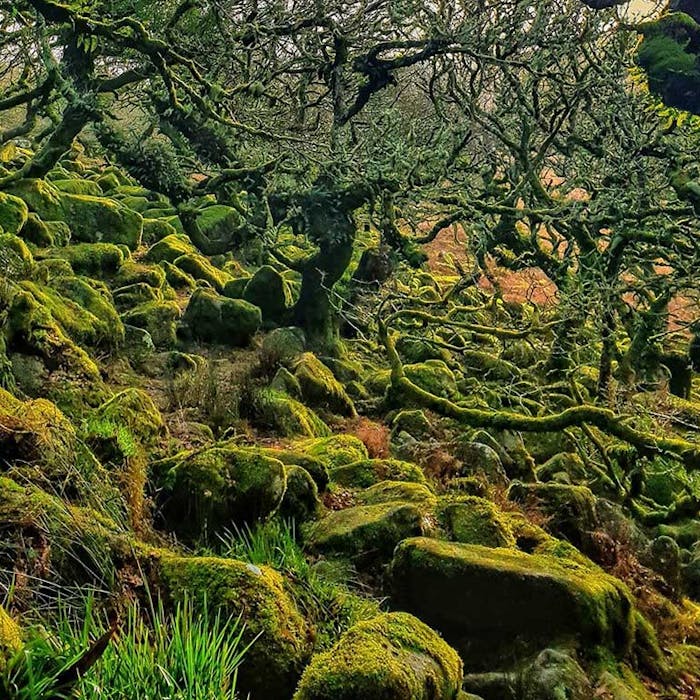
Wistman's Wood
This mystical stunted oak wood in Dartmoor in Devon is a Nature Reserve, important for its fragile mosses and lichens.
Wistman’s Wood is in the Dart river valley in Devon - part of Dartmoor National Park. A grove of ancient and twisted oak trees grows on the eastern slopes of the valley amongst granite boulders.
The wood is thought to be left-over from the ancient forest that covered much of Dartmoor in around 7000 BC before it was cleared two thousand years later. The oldest oaks are around 400-500 years old, and have grown significantly. In 1620, they were described as ‘no taller than a man may touch the top with his head’, whereas in the 20th century they’ve doubled in height to a new average of between 7m and 12m.
The mysterious landscape is home to over 50 species of moss and liverwort and over 100 types of lichen, as well as a wealth of wildlife.
The moss and lichen, the twisted branches and the sense of immense time has created a rather spooky atmosphere. Not surprisingly, this old landscape features in many legends. Indeed, the name may come from the dialect word ‘wisht’ meaning eerie/uncanny or pixie-led/haunted.
These myths include that Wistman’s Wood was a sacred grove of the Druid’s and that they held their pagan rituals here.
The wood is also said to be the kennels where the diabolical ‘Wisht Hounds‘ are kept. These are a pack of fearful hell hounds who hunt across the moors at night in search of lost souls and unwary traveller’s. It is said that they are huge black dogs with blood red eyes, huge yellow fangs and an insatiable hunger for human flesh and souls. It depends on what part of the moor you meet them but they are either led by the Devil or occasionally by the ancient spirit of Dartmoor known as ‘Old Crockern‘ who lives nearby on Crockern tor.
There have been reports from travellers that on dark, misty nights the hounds can be heard howling and baying for blood.
The wood is also said to be home to knots of adders who writhe and slither amongst the velvet moss covered boulders, their bites are apparently more venomous that any other adder on Dartmoor.
Further reading
Links to external websites are not maintained by Bite Sized Britain. They are provided to give users access to additional information. Bite Sized Britain is not responsible for the content of these external websites.
